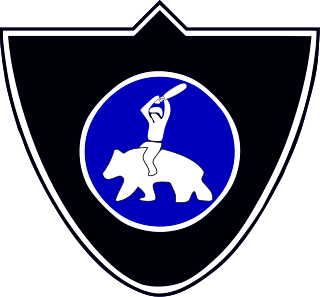
Erkki Sakari Tuomioja is a Finnish politician and has previously been a member of the Finnish Parliament. From 2000 to 2007 and 2011 to 2015, he served as the minister for foreign affairs. He was president of the Nordic Council in 2008.

Patriotic People's Movement was a Finnish nationalist and anti-communist political party. IKL was the successor of the previously banned Lapua Movement. It existed from 1932 to 1944 and had an ideology similar to its predecessor, except that IKL participated in elections with limited success.

The Order of the Lion of Finland is one of three official orders in Finland, along with the Order of the Cross of Liberty and the Order of the White Rose of Finland. The President of Finland is the Grand Master of all three orders. The orders are administered by boards consisting of a chancellor, a vice-chancellor and at least four members. The orders of the White Rose of Finland and the Lion of Finland have a joint board. The President of Finland wears the Star of the Order of the Lion of Finland.

Ahti Kalle Samuli Karjalainen was a Finnish economist and politician. He was a member of the Agrarian League and served two terms as Prime Minister of Finland. He is, however, better known for his period as Minister of Foreign Affairs of Finland. Karjalainen is considered one of the most influential figures in post-war Finnish politics. Like President Urho Kekkonen, Karjalainen attached great importance to Finland's relationship with the Soviet Union, and was at one point considered to be Kekkonen's likely successor until alcoholism affected his later career.

Helsinki is one of the 13 electoral districts of the Parliament of Finland, the national legislature of Finland. The district was established as Helsinki City in 1954 from parts of Uusimaa Province. It was renamed Helsinki in 1997. It is conterminous with the municipality of Helsinki. The district currently elects 23 of the 200 members of the Parliament of Finland using the open party-list proportional representation electoral system. At the 2023 parliamentary election it had 546,375 registered electors.

Kari Peter Conrad von Bagh was a Finnish film historian and director. Von Bagh worked as the head of the Finnish Film Archive, editor-in-chief of Filmihullu magazine and co-founder and director of the Midnight Sun Film Festival. From 2001, he was the artistic director of the film festival Il Cinema Ritrovato in Bologna. Von Bagh was a member of the jury in the competition category of 2004 Cannes Film Festival.

Sakari Severi Tuomioja was a Finnish politician and diplomat who served as Prime Minister of Finland between 1953–1954 and as Minister for Foreign Affairs between 1951–1952 and as the Governor of the Bank of Finland between 1945–1955. He was also Finland's ambassador in London and Stockholm.

Finland has produced postage stamps for use since 1856.

Heikki Huttunen was a Finnish sport shooter who competed at the 1908, the 1912 and the 1924 Summer Olympics and won five Finnish national championship golds.

Yrjö Vilho Soini was a Finnish journalist, novelist and playwright, who used the pen name Agapetus. His humorous works enjoyed wide popularity in Finland during the 20th century and several of them have been adapted into films.

Seppo Erkki Sakari Heikinheimo was a Finnish musicologist, music journalist, writer and translator.

Jorma Jaakko Vanamo was a Finnish diplomat. He served as Finland's ambassador to Warsaw (1958–1963), Moscow (1963–1967), Rome, Valletta and Nicosia (1970–1975) and Stockholm (1975–1980). He also served as Ambassador to Bucharest (1958–1960), Sofia (1958–1963), Kabul (1963–1966) and Ulan Bator (1963–1966).

The Night Frost Crisis or the Night Frost was a political crisis that occurred in Soviet–Finnish relations in the autumn of 1958. It arose from Soviet dissatisfaction with Finnish domestic policy and in particular with the composition of the third government to be formed under Prime Minister Karl-August Fagerholm. As a result of the crisis, the Soviet Union withdrew its ambassador from Helsinki and put pressure on the Finnish government to resign. The crisis was given its name by Nikita Khrushchev, who declared that relations between the countries had become subject to a "night frost".

Pekka Heikki Tapani Gronow is a Finnish ethnomusicologist and historian of the recording industry. He studied at Wesleyan University with David P. McAllester and Robert E. Brown and at the University of Helsinki and received his PhD from the University of Tampere. He was the head of the record library at Yleisradio 1989–2006 and an archiving specialist 2007–2008. Gronow became known in the 1960s for his radio programs on jazz and blues. In 1966 he founded with M. A. Numminen Eteenpäin, a record company which issued Numminen's works and other underground artists.

Johan (John) Jacob Julin, was a Swedo-Finnish pharmacist, factory owner and vuorineuvos. His son was Albert von Julin, a businessman and also a vuorineuvos. Through his daughter Hélène, he was also the maternal grandfather of Gustaf Mannerheim, the Marshal of Finland.
Suosikki was the longest-lived youth magazine in Finland, published from 1961 to 2012. It was published by Otavamedia. The magazine was discontinued at the end of 2012. Jyrki Hämäläinen served as the magazine's editor for 35 years and the magazine has been called his life's work.

Kaarlo Henrik Hillilä was a Finnish politician who served as the provincial governor of Lapland (1938–1947), head of the market town of Rovaniemi, minister of the interior (1944–1945), minister of supply (1945–1946), and director general of the Social Insurance Institution (1946–1954).

Jaakko Itälä (1933–2017) was a Finnish politician. He served as the minister of education for two terms in the 1970s. He was also a member of the Parliament and head of the Liberal People's Party.



![Occupants of the old student hall: Elias Tunkelo holding a megaphone, Marianne Laxen [fi] (right) and Jarmo Makela sitting in front. Vanhan-valtaus-1968a.jpg](http://upload.wikimedia.org/wikipedia/commons/thumb/3/34/Vanhan-valtaus-1968a.jpg/220px-Vanhan-valtaus-1968a.jpg)

















